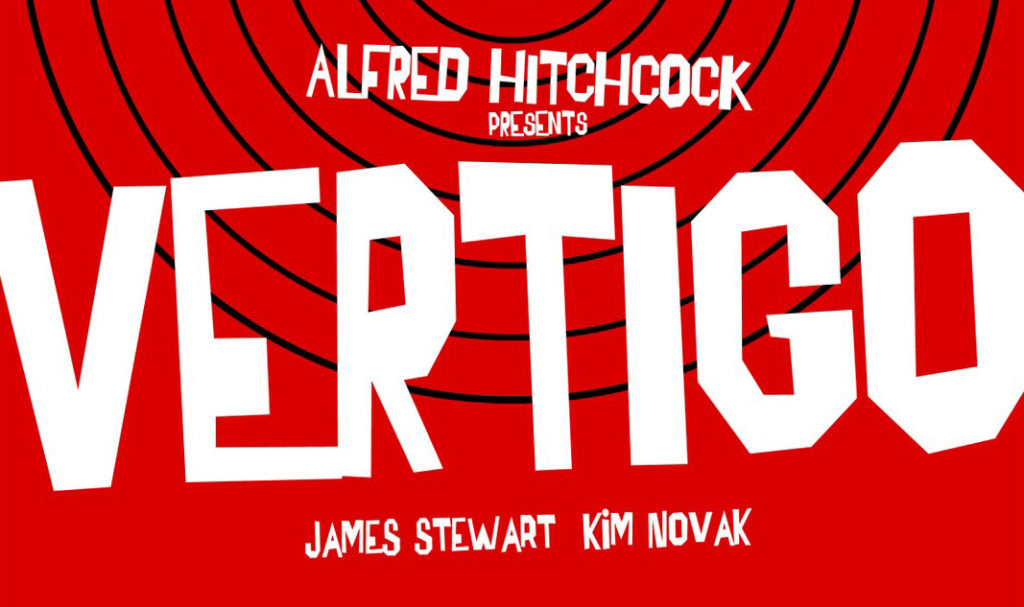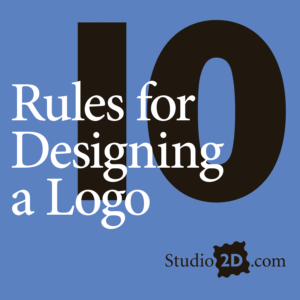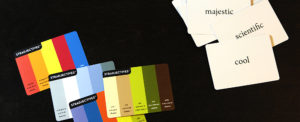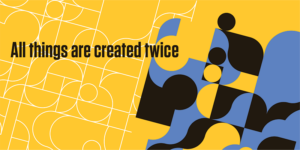A prolific and groundbreaking designer, Saul Bass designed posters for the film industry, including many Hitchcock films. His clients loved his kinetic hand-lettering so much that they asked him to create movie title sequences. His breakthrough approach turned a boring list of credits into a mini-film that set the emotional tone for the feature that followed.
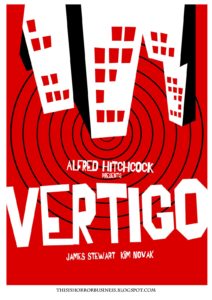
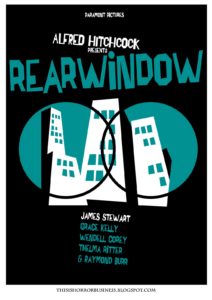 Some of the films that feature Bass opening sequences are:
Some of the films that feature Bass opening sequences are:
The Man with the Golden Arm (Otto Preminger)
Vertigo and Rear Window (Alfred Hitchcock)
Spartacus (Stanley Kubrick)
Casino (Martin Scorsese)
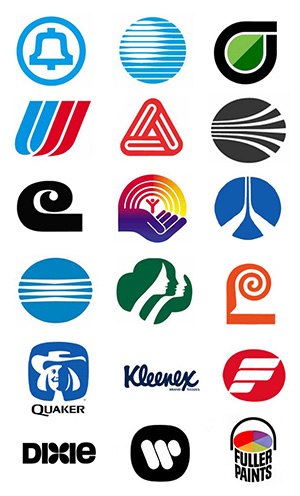 Even outside of the movie industry, Saul Bass was one of the most influential graphic designers of the mid-twentieth century. You will surely recognize most of his corporate marks (right). Based on Peter Behrens’ pioneering visual identity work for AEG from 1907–1915, Saul Bass (and his contemporary Paul Rand) developed brands that live on today. Saul was one of the first designers to create style manuals for his corporate clients to ensure consistency—with flexibility—over time. Branding is taken for granted today and even the smallest businesses now brand themselves to stand out from their competition.
Even outside of the movie industry, Saul Bass was one of the most influential graphic designers of the mid-twentieth century. You will surely recognize most of his corporate marks (right). Based on Peter Behrens’ pioneering visual identity work for AEG from 1907–1915, Saul Bass (and his contemporary Paul Rand) developed brands that live on today. Saul was one of the first designers to create style manuals for his corporate clients to ensure consistency—with flexibility—over time. Branding is taken for granted today and even the smallest businesses now brand themselves to stand out from their competition.
In the ’40s and ’50s, Saul developed his creative process. He started with an analytical approach, with the idea that he could perfect a theory of what worked and replicate it. In Saul’s own words,
”I slowly came to the conclusion that theory is terrific after you have done the work. But when I started on a new piece of work, I had to discard the theory. . . . Belief in predictability was comforting because it held out the hope that the anxieties and uncertainties of the creative process could be tamed and become susceptible to coherent methodology. But it didn’t work that way. You don’t realize that the good stuff comes from a wellspring inside you, one that’s available to you most of the time.”
He applied his creative mind to endeavors including print ads, TV commercials, packaging, record album covers, and children’s books. In collaboration with others, he designed buildings, play environments, and service stations. His clients trusted him as a business advisor as well as designer. For example, when hired to design a trademark for the Aluminum Company of America, Saul proposed changing the name of the company to Alcoa. CEO Lawrence Litchfield embraced the new name and image.
For aspiring creatives, I found this quote to be a valuable tip from the master:
“I try to create a Gestalt in which one element is missing. And that element has to be filled in by the viewer. I want to get him in the game, the association game.”
Saul’s wife Elaine was a full partner in the Bass design business from 1956 onward, and her contributions have been marginalized. Together they created several award-winning short films.
See more of Bass’s posters (and Bass-inspired work) on Pinterest.
Much of the information here and all the quotes are from Saul Bass: A Life in Film & Design by Jennifer Bass and Pat Kirkham.

